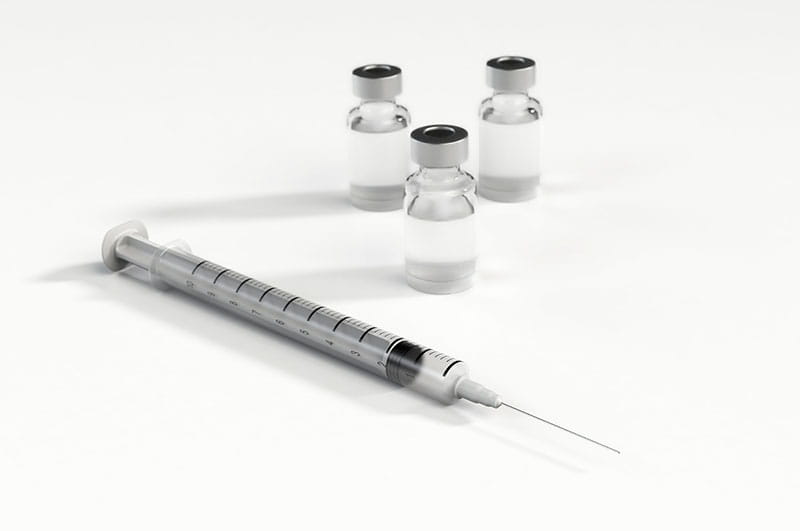Public Health Campaigns Need Greater Emphasis on Complementary Role of Condoms and Vaccination to Prevent HPV among Gay Men

- Drexel Selects New, World-Class Life Sciences Building at 3201 Cuthbert Street for Medical Research Operations
- Breakthrough on Gene Therapy for Hereditary Spastic Paraplegia
- Drexel Environmental Collaboratory Releases Cross-Sector Findings on Severe Weather Recovery Challenges
- Drexel Launches the Manuel Stamatakis Center for Alternative Investments at the LeBow College of Business

Public health efforts must emphasize condom use and vaccination together to reduce human papillomavirus (HPV) cases among young sexually active gay men, according to researchers at Drexel University’s Dornsife School of Public Health published today in the journal Vaccine. The work builds on other studies demonstrating success of these methods by modeling how many HPV cases can be prevented by increasing the number of people vaccinated. This study contrasted vaccination scale-up with other STI prevention strategies, such as condoms and selecting sexual partners based on HIV status, in the reduction of HPV.
Currently, YMSM are at higher risk of HPV, yet only about 15 percent of YMSM have received the HPV vaccine, compared to roughly half of United States adolescents as a whole. This is well short of the U.S. Healthy People 2020 – a set of 10-year national health objectives -- goal of 80 percent of eligible adolescents vaccinated. There are roughly 79 million Americans infected with HPV, including more than 43 percent of adults. The team simulated a population of 5,329 young men who have sex with men (YMSM) aged 18-26, reflecting the population in Philadelphia, for up to 10 years after they received the FDA-approved HPV vaccine. The researchers recorded anal and oral transmission of the nine types of HPV most likely to cause cancer and genital warts that the vaccine helps prevent.
Vaccination was scaled-up at varying levels in the simulation population, reflecting the goal of public health efforts to increase immunization rates. This scale up of vaccination led to consistent declines in anal and oral HPV. Anal HPV declined by 9 percent, 27 percent, 46 percent and 58 percent at vaccination levels of 25 percent, 50 percent, 80 percent and 100 percent, respectively. Similarly, oral HPV declined by 11 percent, 33 percent, 57 percent, and 71 percent across the same levels of increased vaccine use.
Comparing the prevention strategies, condoms blocked the greatest number of anal transmissions when vaccination was at or below present-day levels. For oral transmission, vaccination was more effective than condom use at all levels of vaccination.
“Education surrounding HPV risk still has a long way to go to protect public health,” said lead author Neal Goldstein, PhD, an assistant research professor in the Dornsife School of Public Health and epidemiologist at Christiana Care Health System. “Young gay men tend to be less likely to share intimate details about their sexual health with a medical professional, so public health efforts must put a greater emphasis on what we know works in this particularly at-risk population.”
The vaccine is typically a series of two shots, taken six to 12 months apart; although those receiving the shot after age 15 and those with HIV need three shots. The CDC currently recommends that all boys and girls receive their first HPV vaccine shot by ages 11 or 12, up to age 21 for men and 26 for women. HPV can cause warts on hands and feet and lead to anal or cervical cancer.
“Although public health efforts have focused many efforts on genital HPV, we found the vaccine to be especially impactful in preventing oral infection, which is also just as important,” said Goldstein. “It’s a simple message — vaccination before becoming sexually active is key, along with regular condom use — which protects against many other sexually transmitted infections.” This research was supported by a grant from Merck Sharp & Dohme Corp.
In addition to Goldstein, additional authors on this research include Michael T. LeVasseur, Nguyen K. Tran, Jonathan Purtle, and Seth L. Welles, from Drexel, and Stephen C. Eppes from Christiana Health Care System.
Read the full study here: (https://doi.org/10.1016/j.vaccine.2019.05.047).
In This Article
Contact
Drexel News is produced by
University Marketing and Communications.